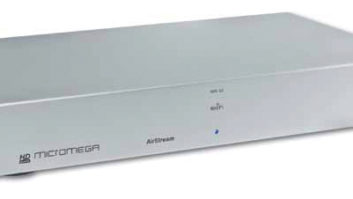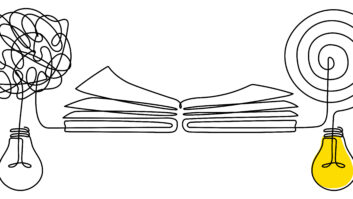Designing and integrating digital audio/video systems in the home requires an understanding of digital compression formats. It would be a wonderful world if there was only one compression format for all audio and video files and they could be played back on any audio/video digital player anywhere in the home.
Unfortunately, large consumer electronic companies have vested interests in developing and/or adopting their own file formats to insure that you buy their proprietary electronic playback equipment. Apple adopted the AAC audio compression format and Microsoft the WMA audio compression format (when the MP3 audio compression standard had already been widely accepted) for valid improved technical reasons but underlying these efforts was the desire for Apple to sell more iPods and Microsoft to sell more media player devices.
The home network A/V integrator must learn about an ever-increasing number of audio/video compression formats if he wants to ensure that his clients distributed digital audio/video system will work as seamlessly as he expects it to work. This knowledge becomes more and more important with the proliferation of digital audio and media servers and players.
Downloading and distributing A/V content from the Internet (or local CD or DVD content) to home theaters and media rooms requires a thorough understanding of these formats to ensure that you have specified the proper decoding equipment and that the network infrastructure and display equipment are optimized for the transport and listening and viewing of these files.
In this column I will briefly cover the most common A/V compression formats, keeping in mind this is just a short list of the dozens of encoding/decoding algorithms on the market today.
MPEG1: In development for years, MPEG1 became an official standard for encoding audio and video in 1992. The simplest of the MPEG standards, it describes a way to encode audio and video data streams, along with a way to decode them. MPEG1 may seem like an ancient specification in these days of super-codecs like Windows Media 9, RealVideo9 and MPEG4, but dont count it out. You can play it on just about any computer or operating system, and it doesnt take any special software or a lot of CPU horsepower to decode. And you can be confident that in 10 years, you will still be able to open and play those MPEG1 files in your archive.
The default size for an MPEG1 video is 352×240 at 30fps for NTSC. These were designed to give the correct 4:3 aspect ratio when displayed on the rectangular pixels of TV screens. MPEG1 delivers roughly VHS quality at 30 frames per second and requires a transport rate of 1.5Mbps for optimal viewing.
MPEG2: The MPEG2 standard builds upon MPEG1 to extend it to handle the highest quality video applications. MPEG2 is a common standard for digital video transmission for all parts of the distribution chain. Broadcast distribution equipment, digital cable head-ends, video DVDs and satellite television all employ MPEG2. You will need special capture cards to encode MPEG2 in real time on a PC. But in the streaming world, MPEG2 is a great source from which to transcode the various Real, WindowsMedia and Quicktime formats served to your clients.
MPEG2 needs about 6Mbps to provide the quality that you are used to seeing on DVD movies. The typical 4:3 default resolution is 720X480, while 1920×1080 provides support for 16:9 high-definition television.
MPEG4: Where MPEG2 was designed to scale up to broadcast and high-definition quality and operating requirements, MPEG4 goes the other way. It is designed to scale down to dial-up internet bandwidths and to tiny devices like cell phones and PDAs; as well as still remain viable for high-quality desktop streaming up to 1Mbps.
But MPEG4 is much more than just an audio and video compression/decompression scheme. It is a container for all kinds of media objects (images, text, video, animation, interactive elements like buttons and imagemaps, etc.) and a way to choreograph them into a synchronized, interactive presentation. MPEG4 also has standard interfaces to allow plugging in a DRM scheme called Intellectual Property Management and Protection (IPMP).
MP3: The ability to squeeze the 1.4Mbps audio stream from a standard audio CD down to a sweet-sounding 128kbps has made MP3 the de facto standard for digital music distribution. You can find MP3 support in every major media player on every computer platform, and dozens of consumer electronic devices can play MP3s. It is as close to a universal format for audio as you will find.
MP3 is actually part of the MPEG1 standard. The audio portion of the MPEG1 spec contains three different compression schemes called layers. Of the three, Layer 3 provides the greatest audio quality and the greatest compression. At 8kbps, MP3 will sound like a phone callintelligible, but nothing you would ever call high fidelity. Good quality music starts at about 96kbps, but generally you will want 128 or 160kbps to get CD-quality reproduction.
MP3 has become a source of great controversy as it facilitates the transfer of CD-quality music on portable media and the internet. Despite the complaints of commercial entertainers, MP3 has become a standard in music broadcasting.
AAC: AAC is the format that Apple uses for its iTunes Music Store. Fans of the MP3 standard and Microsofts proprietary WMA format contest Apples claim of audio superiority. While AAC is widely regarded as being better then MP3 (as good at 96kbps as MP3 at 128 kbps) MP3 is good enough and is so established that the more tightly licensed AAC is unlikely to displace it for a while. Fortunately, with software decoders on PCs we arent stuck with the fixed hardware and media investments that make only one kind of video cassette system viable (like the portable MP3 players, including CD players, that embed decoders that cannot be updated).
MIDI: Musical Instrument Digital Interface is primarily a standard for communication between musical instruments. General MIDI (GM) is a standard for storing compositions based on what events happened during the performance. It does not contain digitized audio data; instead, it stores only the information about which notes were played in a time-line format. QuickTime 2.0 and later supports General MIDI data in QuickTime movies.
The general MIDI format is the evolution of the MIDI standard created in 1986 after an agreement passed with all the different sound companies. They wanted to make an interface that was able to connect all of the music products. The GM (General MIDI) also called MMA (USA) or JMSL (JAPAN) was officially launched in 1991 after the appearance of the sequencer and the musical computer getting more popular.
The most important advantage of a MIDI system is that you can plug several devices together. The other advantage is that all the MIDI devices (sequencers, rhythm boxes and sound mixers) are compatible. The information that can be carried with the MIDI format are the frequency, the pitch, the rhythm and different tones.






